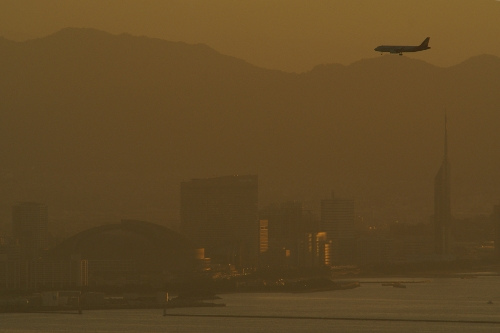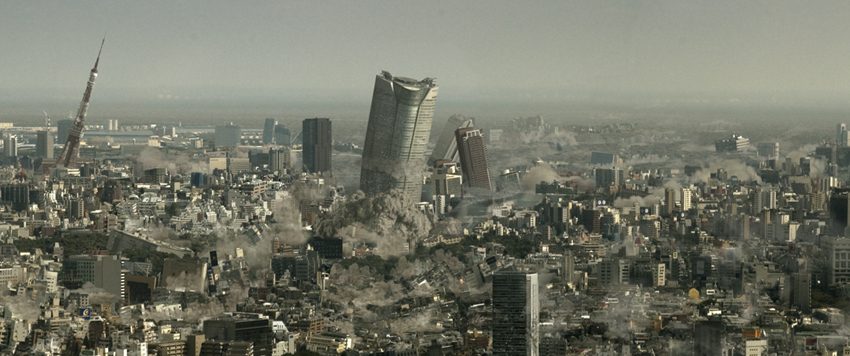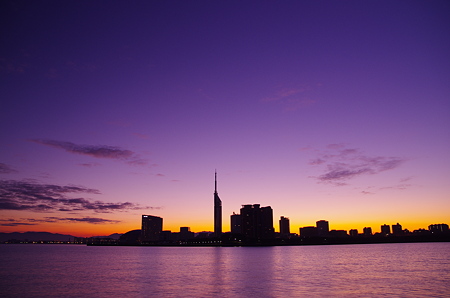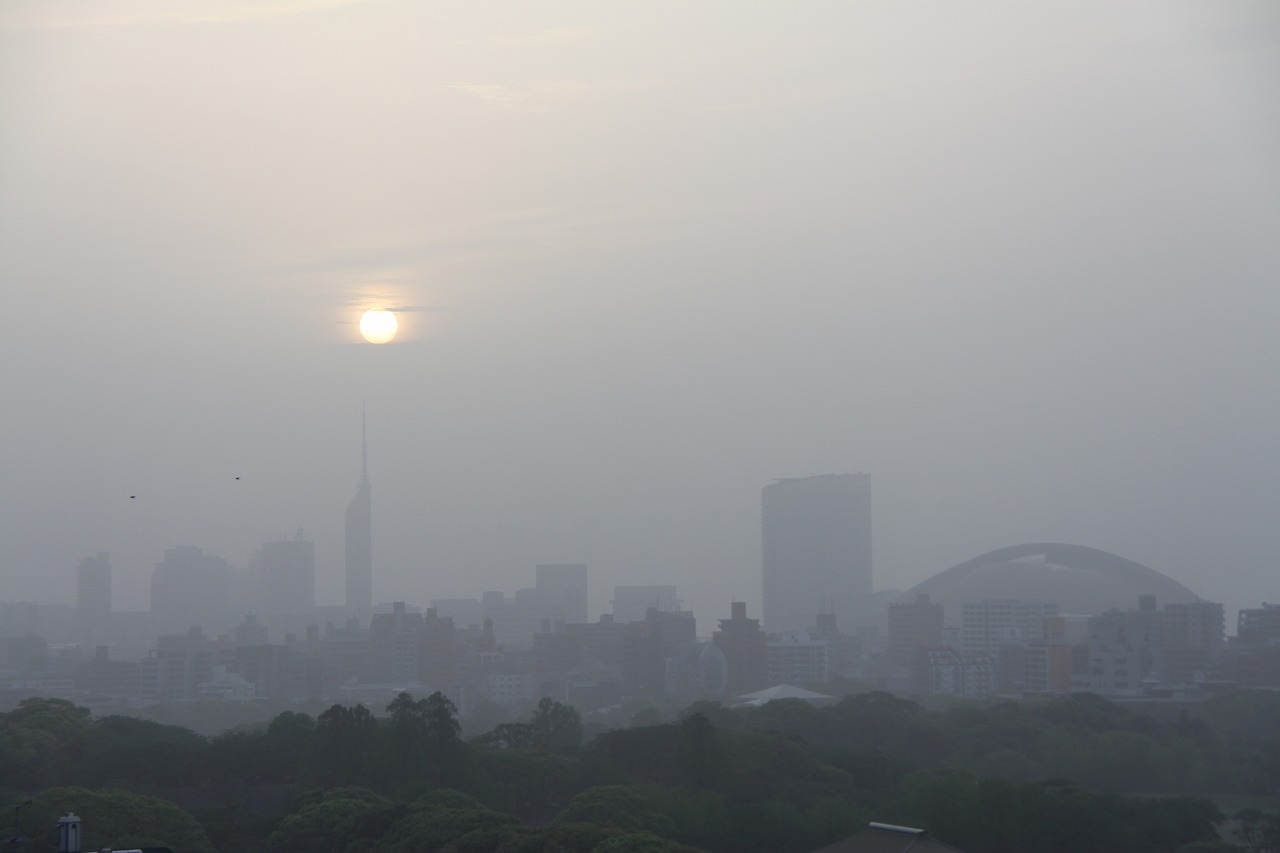This is something I wrote for a local magazine five years ago we we had our own earthquake drama:
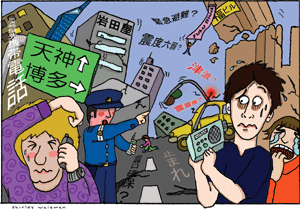 I thought Fukuoka wasn't supposed to have earthquakes. Tectonic growing pains were other prefecture's problems, not ours. That, of course, was until Palm Sunday's M7.0 tremor.
I thought Fukuoka wasn't supposed to have earthquakes. Tectonic growing pains were other prefecture's problems, not ours. That, of course, was until Palm Sunday's M7.0 tremor.
I was at a friend's condo in Momochihama when the quake hit, and, faithful to my grade school drilling, ran for cover. Oddly enough, I was the only one to do so. Several minutes later, NHK confirmed both the obvious--it had been huge, the largest in living memory--and the not so obvious--it's epicenter was along a previously unknown fault. I wonder how many other seismic surprises are in store for Japan.
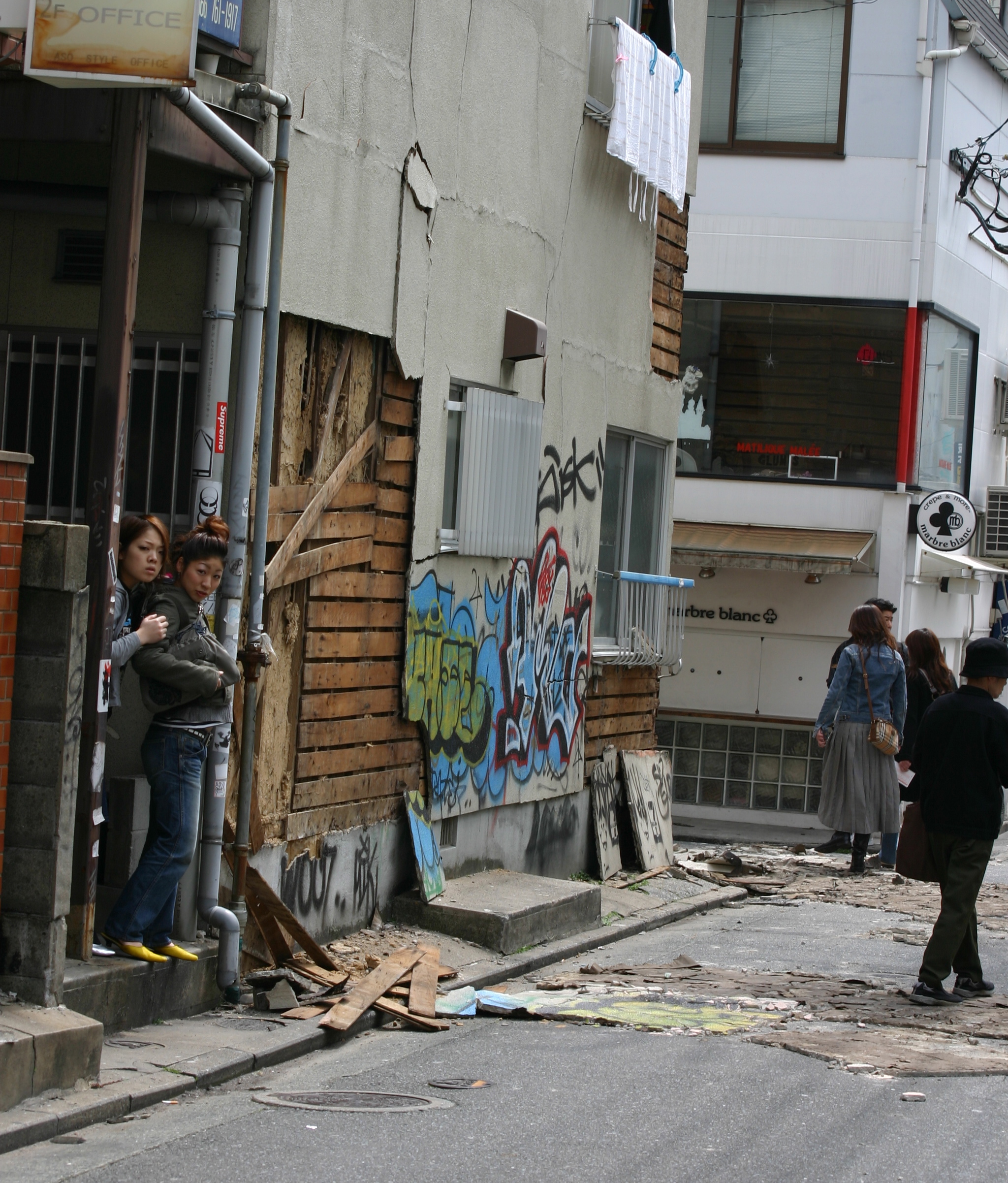 Once the fear of tsunami had been allayed, I started to head home. Here and there muddy water shot up through the ground, making me question the intelligence of erecting so many high-rises on such freshly reclaimed land. Across the Hii River, both the Sea Hawk Hotel and Yahoo Dome had been evacuated. Thousands milled about nervously, many trying in vain to contact loved ones with their virtually useless cellphones.
Once the fear of tsunami had been allayed, I started to head home. Here and there muddy water shot up through the ground, making me question the intelligence of erecting so many high-rises on such freshly reclaimed land. Across the Hii River, both the Sea Hawk Hotel and Yahoo Dome had been evacuated. Thousands milled about nervously, many trying in vain to contact loved ones with their virtually useless cellphones.
With traffic into town paralyzed, I had little choice but to walk. The nearer I got, the more alarming the damage--cracks in the roads and sidewalks, shards of glass and wall tiles everywhere, and buildings rattled violently at their foundation. Though my building in Daimyo appeared at first to have escaped the worst, I was shocked when I opened the front door.
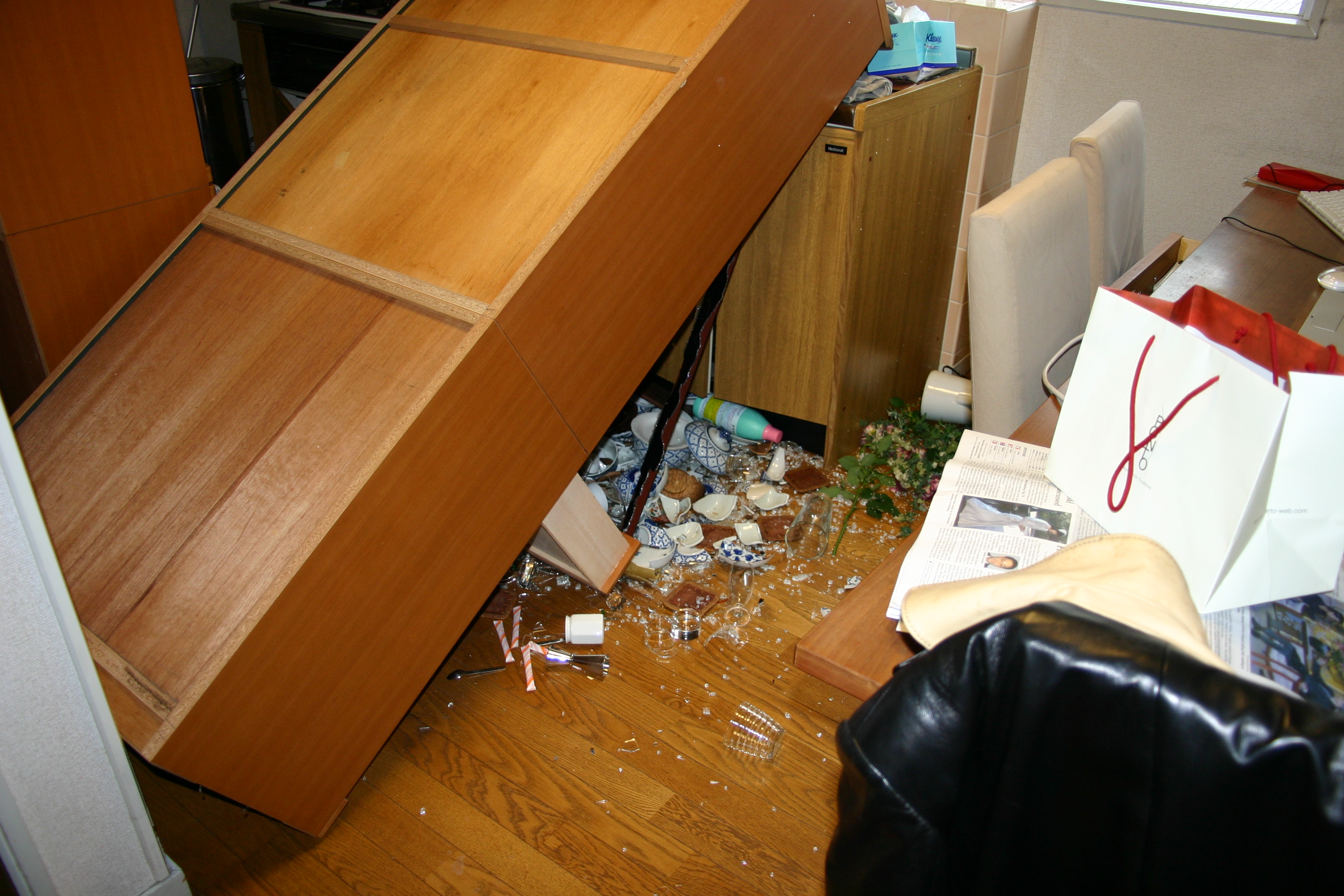 Everything was in disarray. Cabinets had been toppled, their contents smashed to bits, and a pond of water was spreading across the floor. After locating the source of the leak--my washer and dryer unit had also fallen over, dislodging the hose from the faucet in the wall--I turned the water off and hurried over to another apartment I had in Kego.
Everything was in disarray. Cabinets had been toppled, their contents smashed to bits, and a pond of water was spreading across the floor. After locating the source of the leak--my washer and dryer unit had also fallen over, dislodging the hose from the faucet in the wall--I turned the water off and hurried over to another apartment I had in Kego.
With massive cracks in the walls, an elevator wrenched free of the upper floors and broken tiles littering the halls, the three-year-old building looked practically uninhabitable. Even if it were, my shaken neighbors were too frightened to return, a good number of them would move out entirely.
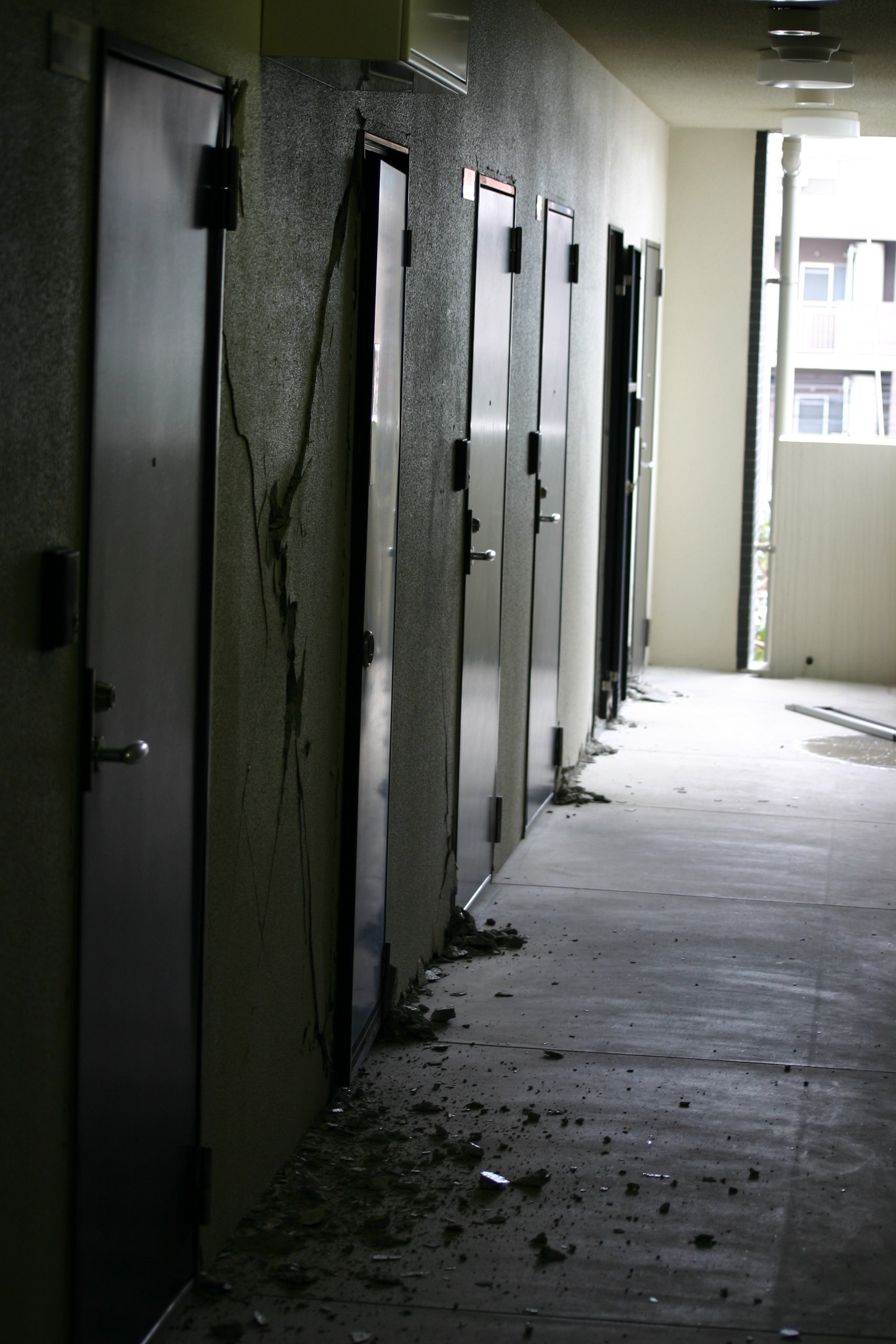 Back in Daimyo, it would be another hour before I could finally get through to my niece who was marooned with her boyfriend outside the Tenjin Bus Center. Aside from the self-evident fact that an earthquake had brought the city to a standstill, the two were clueless. Not speaking Japanese, they were also victims of a dearth of information accessible to them. They were not alone. Apparently, in the hours following the earthquake when accurate information was critical, Love FM was flying the airways on auto-pilot. For a radio station established ostensibly to serve as a reliable lifeline for foreigners, broadcasting canned music during such a crisis is a sobering reminder of how conditional love can be when it's needed.
Back in Daimyo, it would be another hour before I could finally get through to my niece who was marooned with her boyfriend outside the Tenjin Bus Center. Aside from the self-evident fact that an earthquake had brought the city to a standstill, the two were clueless. Not speaking Japanese, they were also victims of a dearth of information accessible to them. They were not alone. Apparently, in the hours following the earthquake when accurate information was critical, Love FM was flying the airways on auto-pilot. For a radio station established ostensibly to serve as a reliable lifeline for foreigners, broadcasting canned music during such a crisis is a sobering reminder of how conditional love can be when it's needed.
Later as I was putting my home in order and taking an inventory of the loss, the battle-ax who had a room below mine came to my door and ordered me to follow her downstairs.
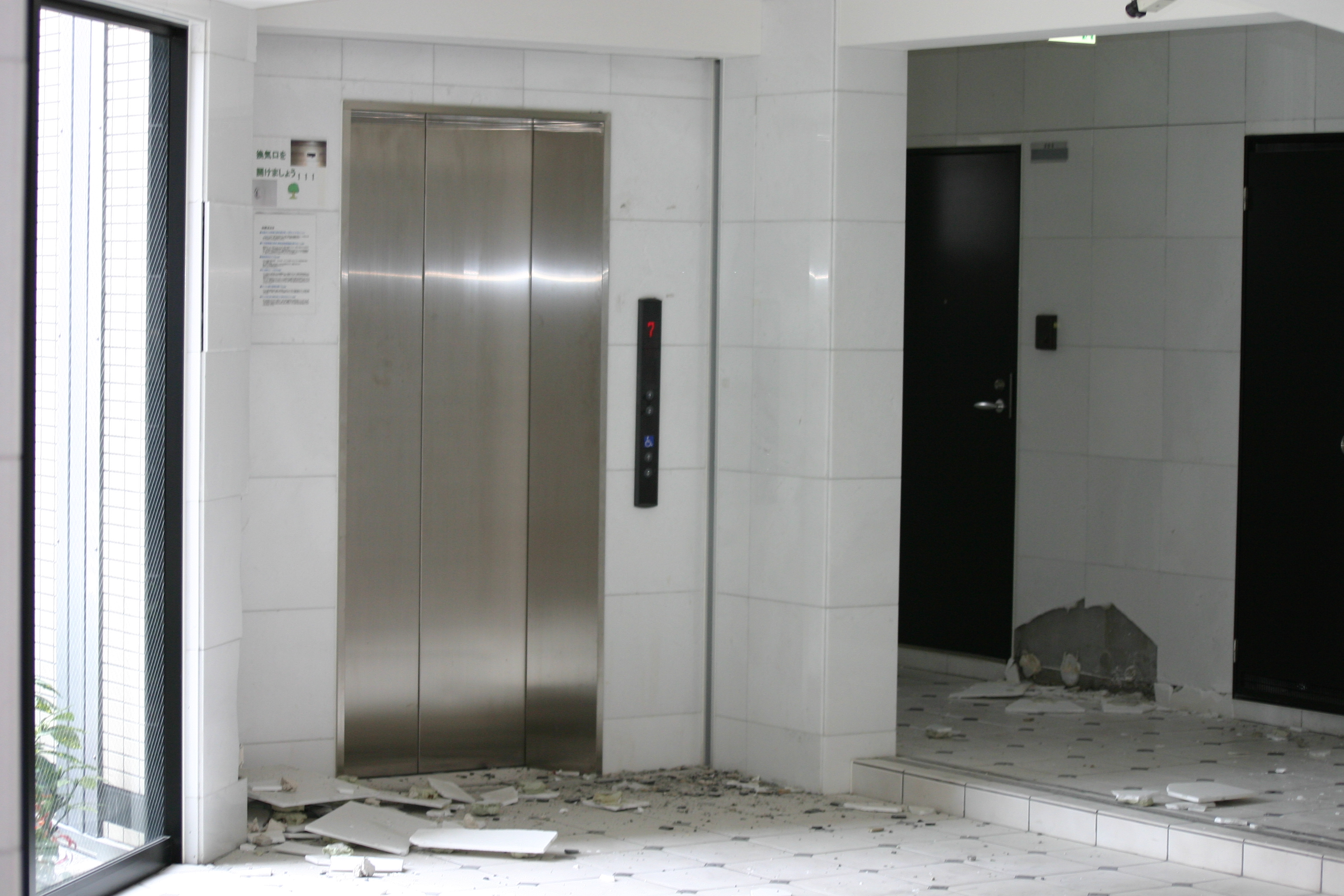 In her apartment I was greeted a group of humorless old biddies who glared at me. Above their heads was a ceiling that was leaking like a sieve. They wanted to know something that had also been on my mind: was I insured?
In her apartment I was greeted a group of humorless old biddies who glared at me. Above their heads was a ceiling that was leaking like a sieve. They wanted to know something that had also been on my mind: was I insured?
"Yes, yes, of course, I'm insured."
I had no choice in that matter when I rented the apartment. But, covered for earthquakes? Well, like 85% of Fukuokans I would learn later that afternoon that I wasn't. I should have known better. The insurance business is a not-so distant cousin of the protection racket. Those friendly insurance salesmen peddle confidence and security, but when you try to get them to actually pay up, they become suspiciously self protective. The lucky 15% of people in the city who were indeed covered might expect to recoup a measly five percent of the damage. While I've managed to be philosophical about my own loss, the battle-ax downstairs hasn't been as magnanimous.
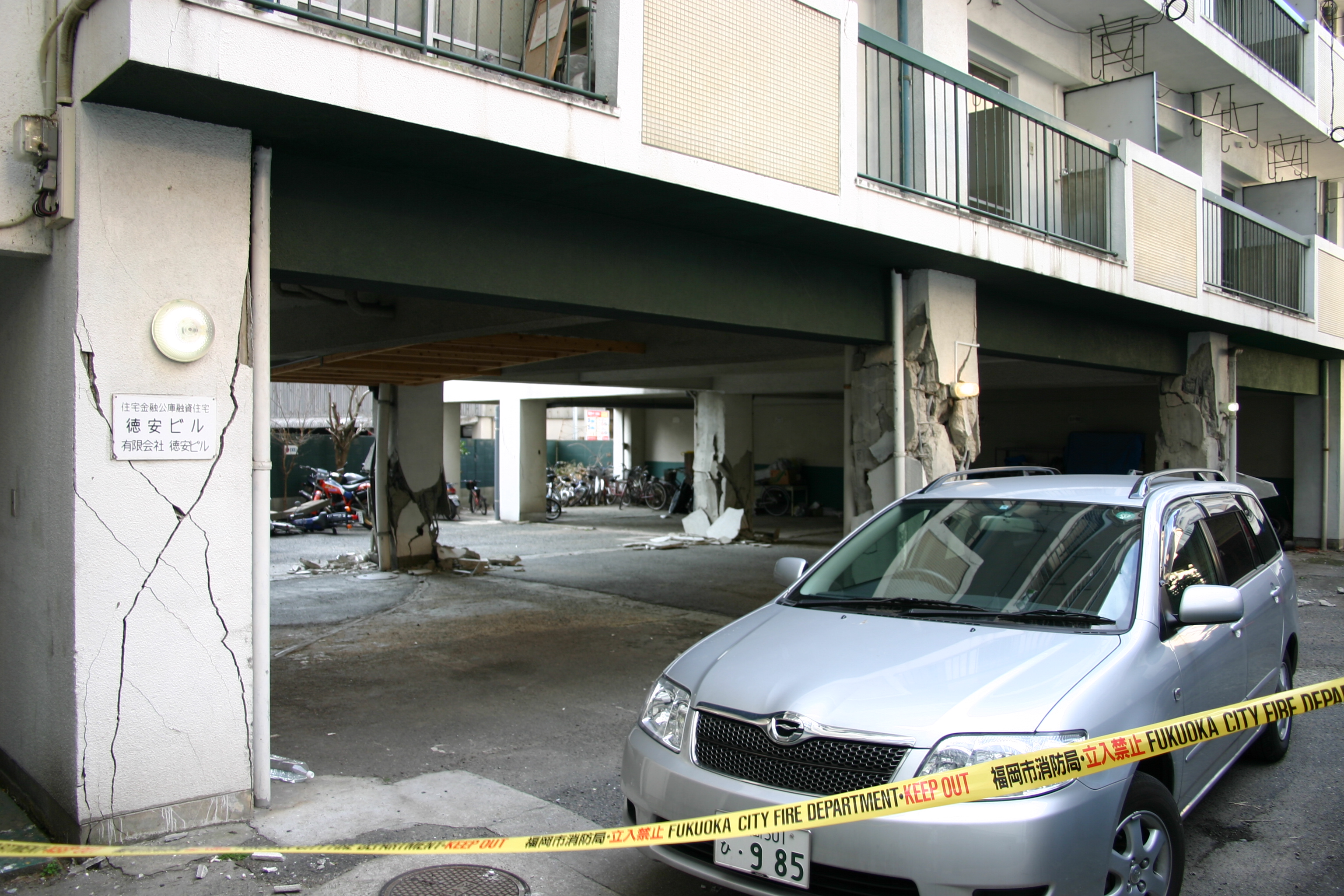 Sleep was out of the question that first night, fitful at best that entire week, thanks to the aftershocks which did a splendid job keeping me sharp. The nausea and migraines influenced by these not so subtle reminders that the earth was indeed alive and kicking made me feel as if I were paddling across the Pacific in a leaky swan boat.
Sleep was out of the question that first night, fitful at best that entire week, thanks to the aftershocks which did a splendid job keeping me sharp. The nausea and migraines influenced by these not so subtle reminders that the earth was indeed alive and kicking made me feel as if I were paddling across the Pacific in a leaky swan boat.
The next afternoon, an army of police with the media in tow descended upon Daimyo and began cordoning off the streets and evacuating tenants from their buildings. When I asked an officer why, I was politely told to shove off because it was dangerous. Not very helpful. A sign at the entrance of my building issued a dire warning: an unspecified building was threatening to collapse. All tenants were ordered to take refuge at the local elementary school. Not wanting my miserable puss to be broadcast on national TV like those unfortunate residents of Genkai Island, I chose to camp out at a friend's instead until the evacuation order was lifted several days later.
All in all, I'd say Fukuoka got lucky this time. Inclement weather and timing alone could have made the situation far worse. With a large earthquake along the Kego fault no longer a question of if but when, let's hope that the public and private sector will then use this opportunity to prepare for future catastrophe.
 Monday, February 25, 2013 at 11:50PM
Monday, February 25, 2013 at 11:50PM
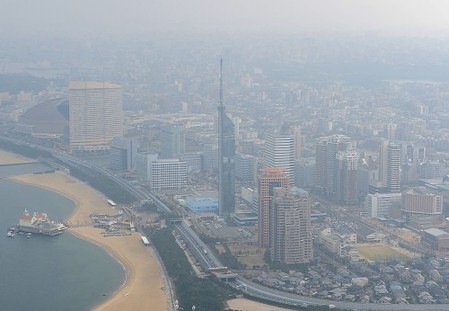 It seems like the more China develops and "modernizes", the more it impacts us here in Japan, and not always in the most positive of ways.
It seems like the more China develops and "modernizes", the more it impacts us here in Japan, and not always in the most positive of ways. Asian dust,
Asian dust,  China,
China,  Fukuoka City,
Fukuoka City,  PM2.5 particulates,
PM2.5 particulates,  Smog,
Smog,  yellow sand in
yellow sand in  China,
China,  Environment,
Environment,  Fukuoka,
Fukuoka,  Living in Japan
Living in Japan 
